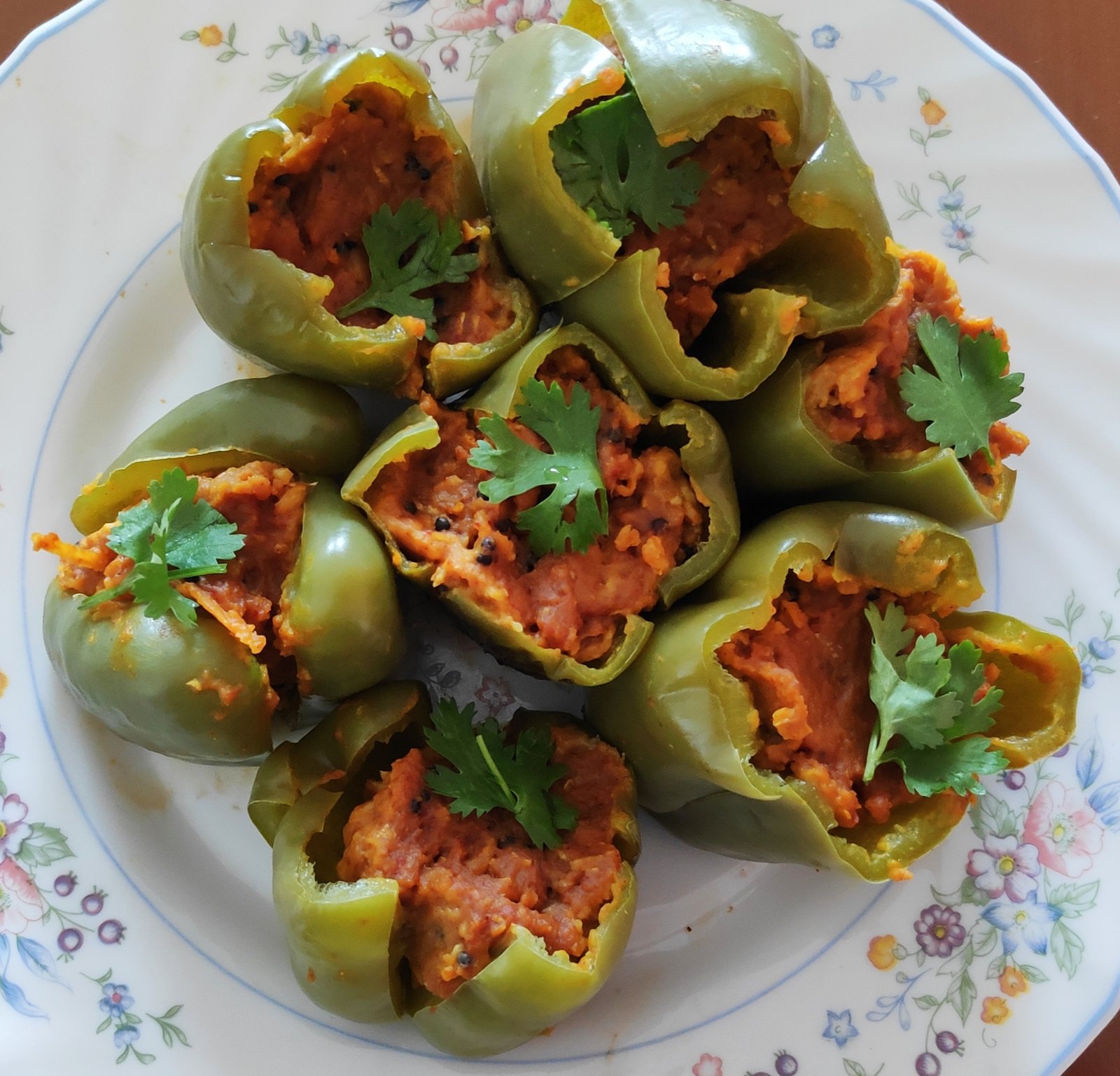Recipe Credit: Darshana Muzumdar
Serves 4 people as a part of an Indian meal.
The combination of sesame seeds, dried coconut, besan and the spices make this dish a surprising delight not just for taste but also from the angle of nutrition. Most people carried food along when they traveled and this was a favorite as it lasted a few days without losing its flavor as it was cooked in oil which acted as a preservative. It also keeps hunger at bay for long hours because of its high fiber ingredients. It was usually eaten with puris, which we don’t advise as part of a WFPB diet as oil is not a whole food ingredient. You can carry some millet breads or even whole wheat flour rotis instead. However, the WFPB version doesn’t last as long as it is not cooked in oil. The coconut and the sesame seeds in it are already full of healthy fats and so the dish does not need any more added oil or fats. It can be served as part of a main meal or as a snack for late afternoon with some Sol Kadhi or other traditional beverage.
Ingredients
- 5-7 small to medium sized capsicums (around 250 gms)
- ½ cup besan (or powder of phutana/roasted Bengal gram)
- ½ cup grated dry coconut
- 3 tbsp sesame seeds
- 1½ inch piece ginger (do not use if making this dish Jain friendly)
- 1 tsp red chilli powder (preferably Kashmiri red chilli)
- ½ tsp turmeric powder
- 4 limes
- 1 tbsp mustard seeds
- ¼ tsp hing powder
- 2 tbsp groundnut or coconut oil
- 1½ tsp salt
- A few sprigs of coriander leaves for garnishing (optional)
Method
Wash and dry the capsicums. Cut off the top and then slit each capsicum vertically almost till the end into 4 “petals”, making sure the pieces are not separated. Keep these aside ready to be filled. If you are using besan (chickpea flour) dry roast it in a thick bottom steel kadhai or pan on medium heat till it loses its raw flavour and releases its aroma (around 5-8 minutes depending on the heat). Take care not to let it brown or burn. If you are using phutana powder, it doesn’t need to be roasted. Roast the sesame seeds on low to medium heat till it starts popping or is a light brown (around 3-5 minutes). Take care not to let it become dark brown or burn. Immediately transfer it on a plate to cool. Grind it to a powder once it has cooled down. Add this to the besan or phutana powder. Wash and chop the ginger into very fine pieces. Add the ginger, salt, red chili powder, turmeric powder and grated dry coconut to the roasted besan/phutana powder. Mix well. Add the juice of 4 limes. Mix the besan into a loose dough adding a little water if necessary. Keep it aside for 15 minutes. Add more water to make it soft if it soaks up all the moisture and becomes solid. Carefully stuff the mixture into the capsicums and keep them aside. Heat the oil in a thick bottomed steel pan and add the mustard seeds. Once they pop, add the asafoetida and turn the heat down. Arrange the stuffed capsicums in this pan. Cover the pan with a lid that can hold some water. Pour around ½ cup of water on this lid and cook the capsicums till they are cooked well.
This dish usually lasts well for 4-5 days and is a great dish to carry while travelling.
For the Whole-Food Plant-Based (WFPB) version:
Use unrefined or rock salt.
Do not use oil. Heat an iron tempering ladle and dry roast the mustard seeds till they pop. Add them to the besan dough. Add hing to the ladle and turn the heat down. Sauté for 5-15 seconds or till it releases its aroma. Add this to the besan dough. Mix well and use this stuffing to fill the capsicums.
Place the stuffed capsicums in a thick bottomed steel pan and add half a cup of water. Cover the pan tightly and cook on low heat till the capsicum and stuffing are cooked well. Serve garnished with coriander leaves.
This WFPB version of the dish will not last like the one cooked in oil. It’s best to have it within 2 hours of it being ready.



Share this:
- Click to share on Facebook (Opens in new window)
- Click to share on WhatsApp (Opens in new window)
- Click to share on Twitter (Opens in new window)
- Click to share on Pinterest (Opens in new window)
- Click to share on LinkedIn (Opens in new window)
- Click to share on Skype (Opens in new window)
- Click to share on Reddit (Opens in new window)
- Click to share on Tumblr (Opens in new window)
- Click to share on Pocket (Opens in new window)
- Click to share on Telegram (Opens in new window)
- Click to print (Opens in new window)

